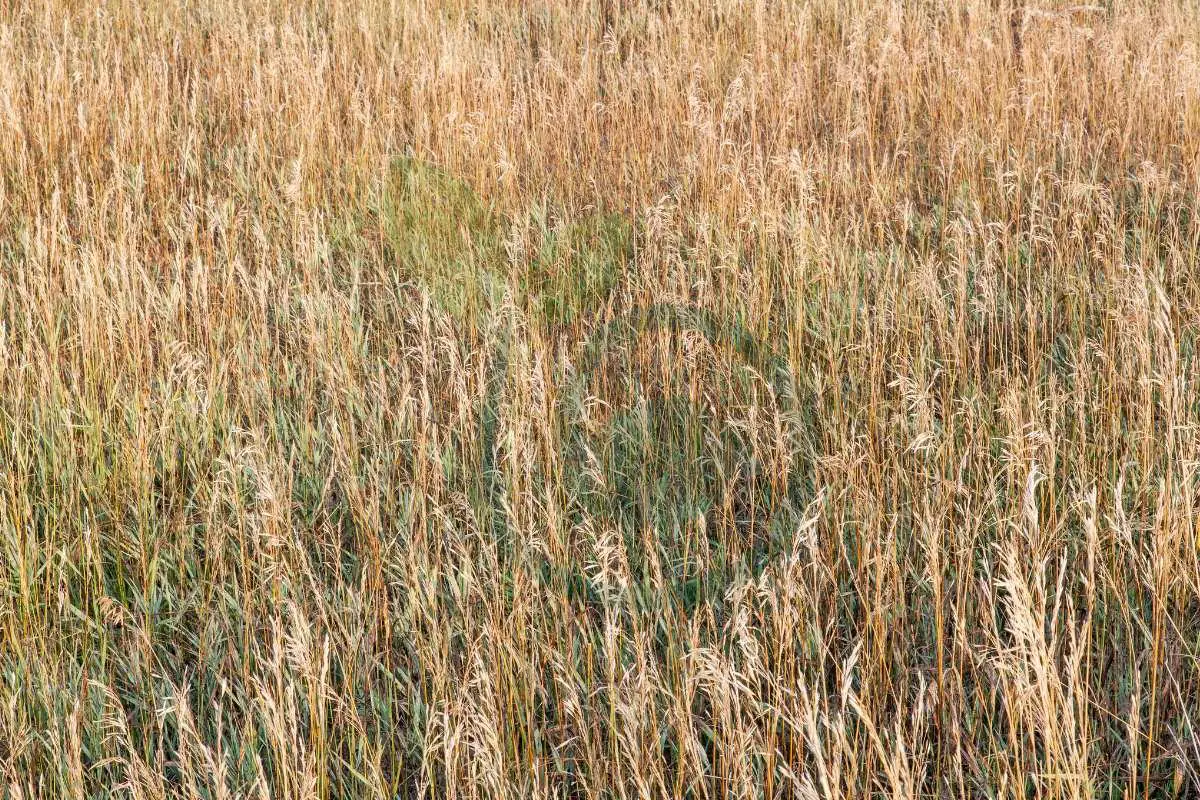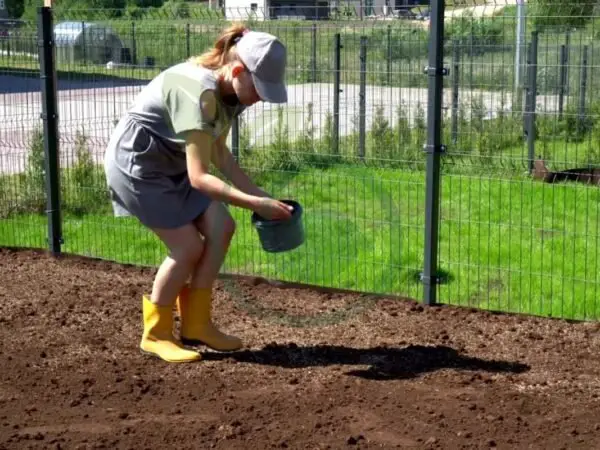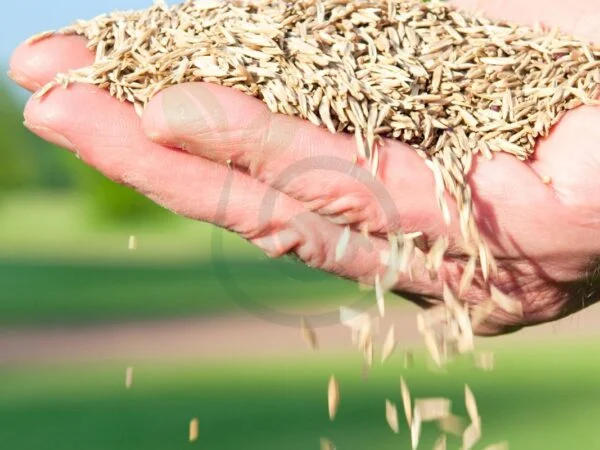
Timing is everything. The contrast between success and disappointment lies in knowing the best time to seed grass. In Colorado's unique climate, understanding the optimal seeding window, warmer soil temperatures can make or break your lawn care efforts. By pinpointing the ideal moment to sow grass seeds, you can ensure robust growth and a vibrant lawn that thrives despite the challenges of Colorado's environment. Stay tuned as we delve into the crucial details of when to seed grass in Colorado for maximum effectiveness.
Key Takeaways
- Timing is Key: The best time to seed grass in Colorado is during the fall, specifically between late August and early October, to take advantage of cooler temperatures and increased moisture.
- Prepare the Soil: Before seeding, ensure the soil is properly prepared by removing debris, aerating, and amending with compost to create an optimal environment for seed germination.
- Choose the Right Seed: Select grass seed that is well-suited to Colorado's climate and your lawn's specific conditions to promote healthy growth and resilience.
- Follow a Seeding Plan: Adhere to a systematic lawn seeding process including proper watering, fertilizing, and maintenance post-seeding to maximize the chances of successful grass establishment.
- Early Planting Benefits: Early planting allows grass seeds to establish before winter, giving them a head start for robust growth in the following spring.
- Avoid Common Mistakes: Steer clear of pitfalls like over-seeding, neglecting soil preparation, improper watering, and mowing too soon after seeding to ensure your lawn renovation efforts yield the desired results.
Understanding Lawn Renovation
Quick Facts
Lawn renovation offers benefits like rejuvenating thin or damaged lawns, enhancing overall aesthetics, and improving property value by overseeding the yard, planting grass seed, and removing dead grass. Introducing new grass species during renovation can boost lawn health by increasing resistance to pests and diseases. Newly seeded areas require special care, including frequent watering to ensure proper germination and growth.
Why Renovate
When faced with issues like disease infestations or excessive shade, lawn renovation becomes crucial for restoring the lawn's vitality. In cases of severe damage or a desire to switch turf species, total renovation is necessary. Partial renovation allows for the introduction of new grass varieties into existing lawns without starting from scratch.
Renovation Timing
For cool-season grasses such as bluegrass and fescues, the optimal seeding time in Colorado falls between late summer and early fall. Warm-season grasses like buffalograss and blue grama thrive when seeded in late spring to early summer. The best time for lawn renovation varies based on the specific grass type and the elevation of the area.
Optimal Seeding Times
Climate Considerations
Colorado's diverse climate significantly impacts the success of lawn renovation projects. The state experiences varying temperatures and precipitation levels, affecting seed germination and growth. Different grass types respond uniquely to these conditions, with some thriving in cooler temperatures while others prefer warmer climates. Renovating lawns in Colorado presents both challenges and advantages due to its arid climate, high altitude, and intense sunlight exposure.
Weather Patterns
The effectiveness of lawn renovation efforts in Colorado is heavily influenced by weather patterns. Seasonal changes like temperature fluctuations and sporadic rainfall can either facilitate or hinder seed germination and establishment. Ideal weather conditions for successful lawn renovation include moderate temperatures, consistent moisture levels, and minimal wind exposure. To adapt to unpredictable weather changes, it's essential to monitor forecasts regularly and adjust seeding schedules accordingly.
Best Months
For seeding cool-season grasses in Colorado, the most favorable months are typically during early fall or late spring when temperatures are mild. Warm-season grasses thrive best when seeded between mid-May to early June for optimal growth during hot summer months. Along the Front Range and Western Slope regions, mid-August to mid-September emerges as the prime time for certain grass types due to ideal temperature ranges and soil conditions. It is advisable to avoid seeding after July as extreme heat can impede germination rates.
Preparing Soil for Seeding
Soil Prep Techniques
To prepare the soil before seeding, kill existing vegetation and remove thatch layers to create a clean seedbed. This step ensures that new grass seeds have ample space to germinate and grow. Consider using a core cultivation or power raking technique to further enhance the quality of the seedbed.
Core cultivation involves creating small holes in the soil, allowing for better air circulation and water absorption. These conditions are optimal for seed germination. Power raking, on the other hand, helps remove debris and loosen compacted soil, promoting healthier root development in newly seeded areas.
Proper soil preparation is crucial for successful seed germination. By taking the time to prepare the soil adequately, you set the stage for robust grass growth in your lawn renovation project.
Fertilizing Lawn
When renovating your lawn, applying starter fertilizer is essential to provide necessary nutrients for new grass seeds. This fertilizer promotes healthy root development and accelerates initial growth after seeding. Choose a fertilizer type with balanced nutrients suitable for young plants.
Fertilization plays a vital role in supporting healthy grass growth during renovation by supplying essential elements like nitrogen, phosphorus, and potassium. These nutrients are crucial for establishing strong roots and vibrant green foliage in newly seeded areas.
Consider factors such as fertilizer type and application rate when choosing products for your lawn renovation project. Proper fertilization enhances overall turf health and resilience against environmental stressors post-seeding.
Core Cultivation
Core cultivation contributes significantly to successful seed germination by improving soil structure and nutrient availability around seeds. The small holes created during core cultivation allow air, water, and nutrients to penetrate deep into the soil profile.
For optimal results, aim for a core cultivation depth of around 2-3 inches with hole spacing of 4-6 inches apart across your lawn area. This technique creates an ideal environment for new grass seeds to establish strong root systems quickly.
Both core cultivation and power raking are effective techniques for preparing soil before seeding; however,core cultivation offers additional benefits by improving overall soil health through enhanced aeration and drainage capabilities.
Selecting Grass Seed
Seed Varieties
When selecting grass seeds, consider various varieties suitable for overseeding existing lawns or total renovation projects. Understanding compatibility factors is crucial to ensure successful establishment of the chosen grass species. Popular seed varieties recommended for Colorado lawns include Kentucky bluegrass, perennial ryegrass, and fine fescue.
Introduce different seed varieties suitable for overseeding existing lawns or total renovation projects. Discuss compatibility factors when selecting grass species to ensure successful establishment. Highlight key characteristics of popular seed varieties recommended for Colorado lawns.
Choosing Right Grass
Guide readers on selecting the most appropriate grass species based on specific lawn conditions like sunlight exposure and soil type. Address compatibility issues when introducing new grass varieties into existing lawns, emphasizing the importance of soil preparation and maintenance practices. Seek advice from local experts to determine the best species and variety for your lawn.
Guide readers on selecting the most appropriate grass species based on specific lawn conditions. Address compatibility issues when introducing new grass varieties into existing lawns, emphasizing soil preparation and maintenance practices. Seek advice from local experts regarding species and variety selection.
Sod vs Seed
Differentiate between using sod and seed methods for establishing or renovating lawns in Colorado. Understand that sodding provides instant results but comes at a higher cost compared to seeding, which requires more time to establish but is cost-effective in the long run due to better root development. Factors influencing successful sodding include proper soil quality assessment, installation techniques, and post-care maintenance practices.
Differentiate between using sod and seed methods for establishing or renovating Colorado lawns effectively. Understand that sodding provides instant results but comes at a higher cost compared to seeding; however, it ensures better root development in the long run with proper care.
Lawn Seeding Steps
Preparing for Planting
To prepare your lawn for seeding, start by removing any debris and thatch to ensure good seed-to-soil contact. Next, apply herbicides if needed to eliminate weeds that can compete with the new grass. Afterward, loosen the soil using a rake or aerator to create an optimal environment for seed germination.
Properly preparing your lawn before planting seeds is crucial as it creates favorable conditions for successful growth. By removing thatch and applying herbicides, you eliminate obstacles that could impede seed germination. Thorough preparation maximizes the chances of a healthy and lush lawn post-seeding.
Thorough pre-planting procedures are essential to achieve successful renovation outcomes. This includes ensuring proper soil moisture levels, adequate sunlight exposure, and addressing any drainage issues beforehand. By taking these steps seriously, you set the stage for a thriving lawn after seeding.
Applying Seed Correctly
Start by evenly spreading the seeds using a broadcast spreader or hand spreader. Ensure proper coverage by following recommended seeding rates based on the type of grass being planted. Lightly rake the seeds into the soil surface to promote good seed-to-soil contact.
Properly watering newly seeded areas is crucial for seed germination and establishment. Ensure consistent moisture levels by watering lightly multiple times a day until the seeds have sprouted and established roots in the soil. Avoid overwatering as it can lead to fungal diseases and poor root development.
New Seed Care
Once your grass seeds have germinated, continue to water regularly but less frequently to encourage deep root growth. Mow new seedlings when they reach about 3 inches in height, ensuring not to remove more than one-third of their total height at once. Gradually transition into regular mowing practices as your new lawn matures.
Fertilize newly seeded lawns approximately six weeks after planting with a balanced fertilizer formula suitable for young grasses' needs. This helps provide essential nutrients for healthy growth without overwhelming delicate young plants with excessive chemicals.
Lawn Care Post-Seeding
Maintenance Tips
After seeding a new lawn, it is crucial to maintain it properly for optimal growth and health. Regularly mowing the grass at the recommended height helps promote root development. Remove any weeds that may compete with the new grass for nutrients and sunlight.
To ensure your new lawn thrives, fertilize it as needed based on soil tests and recommendations from local experts. Avoid over-fertilizing as this can harm the delicate new grass. Keep an eye out for any signs of pests or diseases and address them promptly to prevent damage.
Watering New Seed
Proper watering is essential for the success of your newly seeded lawn. Water deeply but infrequently to encourage deep root growth, typically 1-2 times per week depending on weather conditions. Ensure that the soil stays consistently moist but not waterlogged.
Avoid watering too frequently as this can lead to shallow root systems that are more susceptible to stress during dry periods. Consider using a sprinkler system or soaker hose for efficient watering, especially during hot summer months when moisture evaporates quickly.
Avoiding Mistakes
One common mistake many make after seeding a new lawn is neglecting proper care during critical growth stages. Avoid walking on freshly seeded areas to prevent compaction and damage to emerging seedlings. Be cautious when using herbicides near new grass as they can inhibit growth.
Overlooking soil preparation before seeding can also lead to poor results. Ensure the soil is well-aerated, free of debris, and has adequate nutrient levels for healthy grass growth. Finally, resist the urge to mow too soon after seeding; allow the grass blades to reach a recommended height before mowing.
Seeding Quantity Guidelines
How Much Seed
To achieve a lush lawn in Colorado, it is crucial to determine the right amount of grass seed. Start by considering the type of grass you are planting. Different varieties have specific seeding rates based on their characteristics. For example, Kentucky bluegrass requires around 2-3 pounds per 1,000 square feet, while tall fescue needs 6-8 pounds for the same area.
When calculating how much seed to use, keep in mind the condition of your soil and the desired thickness of your grass. A good rule of thumb is to aim for about 16 seeds per square inch. This ensures adequate coverage and promotes healthy growth over time.
Coverage Rates
Understanding coverage rates is essential for successful grass seeding in Colorado. Consider factors like germination rate and seed quality when determining coverage rates. Higher-quality seeds tend to have better germination rates, requiring less seed per square foot.
To optimize coverage, it's recommended to divide your total seeding quantity into two parts: one-third for an initial application and two-thirds for overseeding sparse areas later on. This approach helps maintain consistent coverage throughout your lawn.
Benefits of Early Planting
Advantages Overview
Early planting of grass seeds in Colorado offers several benefits. Firstly, seeding early in the season allows the grass to establish before the harsh summer heat arrives. This ensures better root development and overall resilience against drought conditions later on.
Moreover, early-planted grass has a longer growing season, which results in a lusher and healthier lawn throughout the year. The cooler spring temperatures provide an ideal environment for seed germination and initial growth, leading to thicker turf coverage.
Another advantage is that early planting helps in weed suppression. By establishing strong grass early on, it can outcompete weeds for resources like sunlight, water, and nutrients. This reduces the need for chemical weed control methods later in the season.
In addition to these benefits, starting early also gives you more flexibility with your schedule. You have a larger window of time to complete the seeding process without feeling rushed or constrained by weather patterns or other commitments.
Growth Success Rates
When you plant grass seeds early in Colorado, you significantly increase your chances of successful germination and establishment. The cooler temperatures during spring create optimal conditions for seedling growth without being stressed by extreme heat.
Seeding early allows the young plants to develop robust root systems before facing intense summer conditions common in Colorado. This leads to stronger and more resilient turf that can withstand periods of drought or high temperatures better than late-planted grass.
Moreover, by following proper seeding guidelines discussed earlier, such as adequate soil preparation and watering practices, you can further enhance the success rates of your grass growth efforts. Consistency in watering schedules during this crucial establishment period is key to ensuring healthy root development and overall plant vigor.
Common Mistakes to Avoid
Lawn Renovation Checklist
To ensure a successful lawn renovation, proper planning is crucial. Begin by assessing the condition of your current grass. Consider factors like soil quality, drainage, and sunlight exposure.
Next, prepare the soil by removing debris and weeds. Perform a soil test to determine if any amendments are needed for optimal grass growth.
Choose the right type of grass seed based on your specific needs and local climate conditions in Colorado. Opt for high-quality seeds that are suited for the region.
When seeding, make sure to follow recommended seeding rates to avoid issues like overcrowding or sparse growth. Proper watering is essential during the germination period to promote healthy root development.
Regular maintenance tasks such as mowing, fertilizing, and watering should be carried out according to a schedule. Keep an eye out for signs of pests or diseases that may affect your newly seeded lawn.
Things to Avoid
Avoid rushing the process by skipping important steps like soil preparation or choosing low-quality grass seeds. Cutting corners can lead to poor results and require additional time and effort to fix.
Over-seeding can also be detrimental as it can result in competition for resources among young seedlings. Follow recommended seeding rates based on your lawn's size and condition.
Another common mistake is neglecting proper watering practices after seeding. Inadequate water supply can hinder germination and root development, leading to patchy or thin grass coverage.
Using outdated or incorrect information when selecting grass seed varieties can also be problematic. Ensure you choose seeds that are well-suited for Colorado's climate and growing conditions.
Closing Thoughts
In Colorado, knowing the best time to seed your grass is crucial for a thriving lawn. By understanding the renovation process, optimal seeding times, soil preparation, and seed selection, you set yourself up for success. Following the right steps post-seeding and avoiding common mistakes ensures your efforts yield a lush green carpet in your yard. Early planting brings numerous benefits, so seize the opportunity to start early for a vibrant lawn.
Take charge of your lawn's health by implementing these tips. Your diligence will be rewarded with a beautiful and resilient grass cover that enhances your outdoor space. Start planning and acting now to enjoy a vibrant lawn that you can be proud of!
Frequently Asked Questions
Is there a specific time of year that is best for seeding grass in Colorado?
The optimal time to seed grass in Colorado is during the late summer or early fall, typically between late August and mid-September. This timing allows the seeds to establish before winter while avoiding extreme heat.
What are some common mistakes to avoid when seeding grass in Colorado?
Avoid over-seeding, neglecting soil preparation, planting at the wrong time, using low-quality seeds, and insufficient watering post-seeding. These mistakes can hinder germination and overall growth of your new lawn.
How should I prepare the soil before seeding grass in Colorado?
Prepare the soil by removing debris, loosening compacted areas, testing and adjusting pH levels if necessary, adding organic matter like compost, and ensuring proper drainage. Healthy soil provides an ideal foundation for successful grass seed germination.
What are the benefits of early planting when seeding grass in Colorado?
Early planting allows the grass seeds to establish strong root systems before winter sets in. This results in healthier turf that can better withstand harsh weather conditions and competition from weeds during the growing season.
How do I select the right type of grass seed for my lawn in Colorado?
Consider factors such as climate zone, sunlight exposure, intended use (ornamental or high-traffic), water availability, and maintenance preferences when selecting grass seed. Popular options for Colorado include Kentucky bluegrass, fescue blends, and perennial ryegrass.
Image Source: Paid image from CANVA




